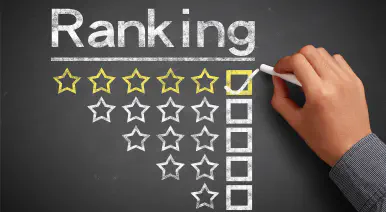Survey Questionnaire Basics
A questionnaire is the mainstay of survey research, used most often to gather information from large numbers of individuals. The questionnaire contains questions (or items) administered online or through the mail that have been standardized to mean the same thing to everyone so that responses can be compared to one another.
It’s always best to generate a plan to direct the questionnaire design and implementation. Points to include in the plan include available resources, outcomes, indicators demonstrating outcome success, sources of information, methods used to gather information, and points at which the information will be gathered. Plans to pilot test the questionnaire should also be an integral part of the plan.
Two types of information are often collected. Quantitative information is best gathered using questionnaires, yielding the summary of large amounts of data and generalizations based on statistical projections.
Qualitative information is gathered from a thorough investigation of issues, using multiple methods, including observations, interviews, focus groups, key informants, and journals to ultimately tell a story.
The richest results often combine quantitative and qualitative approaches. Regardless of which approach is used, the following questions are useful in thinking about the process of questionnaire design and implementation:
- Why are we gathering this feedback? What do we want to know? When do we need the information?
- Are stated goals observable and measurable?
- Do we have the time, resources, and expertise in-house to gather this feedback or do we need to work with a survey research consulting firm?
- What have colleagues in other organizations done?
- With whom should we consult during the planning process (e.g., survey research consultant, statistician)?
- Who should we include in the sample? How will the sample be selected? How many people do we need to reach?
- Is updated contact information available for the sample?
- Do people in the sample speak English? If not, should the questionnaire be translated into other languages?
- What does the target population already know about the topic of the research? Will they be able to answer questions accurately?
- Are there any geographic limitations?
- Will respondents need to consult records when responding to the questionnaire?
- Can false respondents be avoided (that is, someone other than the invited respondent completing the questionnaire)? Is the person at the computer really who they say they are?
- When and how will data be collected? By whom?
- What will be done with the data? How will the data be used?
- Will multiple methods be used to gather feedback?
- How will we ensure validity and reliability of questionnaire items and instruments?
- Who will analyze the data? At what point(s) in the process will data be analyzed?
- How will data be analyzed?
- How will data be displayed and disseminated (e.g., narrative, charts, tables, graphs, hard copy, CD, diskette, web)?
- How will the information be reported? What reports must be written? For whom?
- Are questionnaires and associated materials available in alternative formats for (e.g., large print, Braille, audiotape, videotape, tactile, sign language interpreter, language translator) for people with disabilities?
Respondents to questionnaires represent many cultures and populations; not everyone will speak English and some members of the sample will have a disability. People may be, but not limited to, color blind or have impaired physical strength, range of motion, sensory, mobility, cognition, vision, speech, or hearing.
Some of the laws governing accessible practice include the following:
- Technology Related Assistance for Individuals with Disabilities Act of 1988
- the Americans with Disabilities Act of 1990
- Section 255 of the Telecommunications Act of 1996
- Section 508 of the Rehabilitation Act, as amended in 1998
The legal standards in Section 508 and Section 255 state that the following shall be accessible if “readily achievable”, that is if the entity can be made accessible without much difficulty or expense. This includes, for example, software applications and operating systems, web-based intranet and internet information, video and multimedia products, desktop and portable computers.
Technical standards in Section 508 state that “Applications shall not override user selected contrast and color selections and other individual display attributes.” If applications are not accessible, then they must be, at the very least, compatible with “existing peripheral devices and specialized customer equipment commonly used by people with disabilities” (i.e., assistive technology) (Section 255).
Designing and implementing research questionnaires is both an art and a science. Let NBRI orchestrate the process for your organization. Contact us at 800-756-6168.
Terrie Nolinske, Ph.D.
Research Associate
National Business Research Institute




























 By submitting this form you agree to our
By submitting this form you agree to our